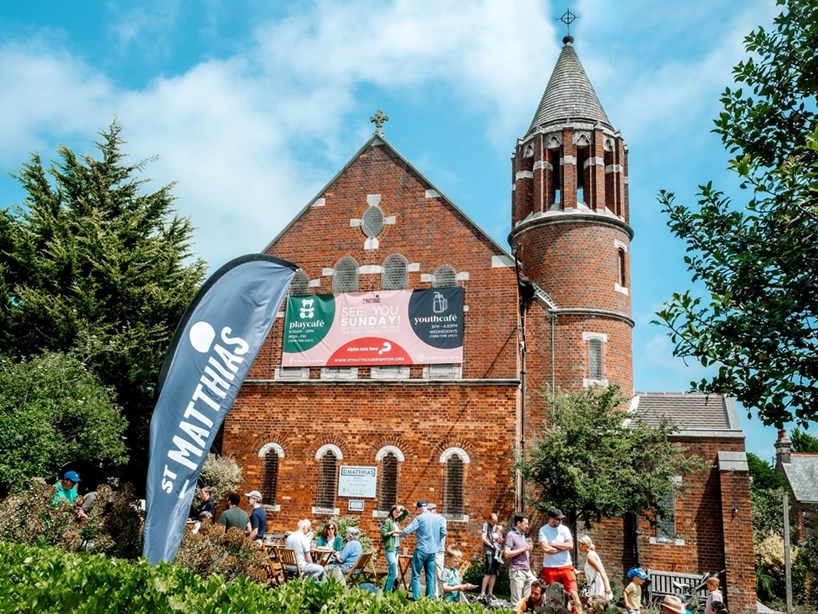A £22-MILLION ten-year strategy agreed by Chichester diocesan synod — to extend church-planting and revitalisation, rebalance the provision of stipendiary ministry towards areas of highest need, and reduce stipendiary clergy numbers while expanding “focal” ministry — has secured in-principle funding of £11.1 million from the Archbishops’ Council.
Of the initial £1.9 million awarded by the Strategic Investment in Mission and Ministry Board (SMMIB), £1.2 million is capacity funding, paying for staff support in parishes and to run the programme. The strategy states that it “is not our desire to increase the team at Church House, but to a limited extent we will need to do so in order to provide the programme management that is required to deliver this ambitious programme, and to satisfy the needs of the national church.
“The money will extend the posts of three members of staff who have helped the develop the strategy, funded with an earlier grant of £599,764, until 2030. One member will serve in a more deprived deanery.”
The remaining £588,000 will be spent on a Mission Fund — to which all parishes can apply — and plans to commission “focal ministers” in at least 30 smaller churches, “to provide focused local leadership with the expectation of modest growth in these churches despite a reduction in stipendiary ministry”.
Chichester is set to undergo pastoral reorganisation over the coming decade, “reluctantly” reducing the provision of stipendiary clergy “to a more sustainable level”.
“Whilst pastoral reorganisation with a lower level of stipendiary ministry allocated will not lead to missional growth, it may lead to a more sustainable position,” the strategy states. “However, if the reorganisation is accompanied by the appointment of one or two Focal Ministers, then there is every prospect of at least holding, if not growing, numbers.”
Last week, the diocese gave several examples of churches that had recorded growth and where lay people functioned as focal ministers. A traditional Catholic parish had grown from 49 to 62, largely thanks to a churchwarden’s efforts; in another parish, a lay apostolic worker had seen a congregation of three grow to more than 40.
The diocese has not stipulated how many stipendiary posts are due to be lost in the coming years, but refers to rebalancing the provision of stipendiary ministry towards areas with higher levels of deprivation, which are less well resourced and have larger populations. These include what the diocese calls “the coastal strip”, Crawley, and Hastings.
The £1-million subsidy currently provided for the most deprived parishes is expected to continue. A diocesan spokesperson said that the numbers cut would depend on parish-share contributions. Between the 2023 and 2026 budgets, the number of budgeted posts had fallen from 222 to 215.
The reductions were announced as a response to “sustained shortfalls in parish share contributions”. In 2024, the Bishop’s Council set a target to reduce the budgeted deficit by £1.5 million, with £550,000 to come from potential post reductions, “taking advantage of the right opportunities as and when they occur”, according to a diocesan-synod paper of May 2024. Last week, the spokesperson said that the diocese was focused on reducing the deficit operating budget, which in 2025 had come down to £723,000.
 ST MATTHIAS’S, FIVEWAYSST MATTHIAS’S, FIVEWAYS
ST MATTHIAS’S, FIVEWAYSST MATTHIAS’S, FIVEWAYS
A paper on the diocesan strategy presented last November said that Chichester had been able to sustain a “relatively high number of stipendiary clergy compared to population size”: one stipendiary priest for every 9414 people, compared with an average of 11,416, although this varied significantly by area.
Between 2011 and 2023, average weekly attendance fell from 43,700 to 28,000, although, in the past four years, one in five churches had grown numerically. The growth strategy envisages that numbers might grow over the decade by between 3000 and 4000, including up to 1600 children and young people. The diocesan bid from the SMMIB was for £11.7 million, in addition to investment of £5.1 million from the diocesan board of finance, and a goal of a £5-million optional contribution from parishes to meeting the cost of children, youth, or family (CYF) workers.
The SMMIB has agreed to consider an in-principle award of £9.2 million for the revitalisations and CYF strands of the strategy. Between 2017 and 2022, the diocese was awarded £4.2 million in Strategic Development Fund grants for the revitalisation of churches through “Apostolic Partnerships” (the diocesan term for church-planting). This included investment in All Saints’, Hove, an “inclusive” Catholic parish; and St Peter’s, Brighton, and St John’s, Crawley, both in the Holy Trinity, Brompton, network.
Of ten existing partnerships listed in the strategy, eight are part of the HTB network and largely responsible for generating the 104-per-cent growth in adult and 167-per-cent increase in child attendance in the past decade. They include St Richard’s, Hollingdean, which is on a Brighton housing estate, and had been closed for nearly a decade when it reopened in 2021. It now has more than 100 people attending every Sunday for worship.
The new strategy says that, while fruitful, these SDF projects have “consumed a significant amount of energy and focus, and we have not had the financial or human resource to provide similar focus elsewhere, with the result that we have seen above average decline in many other areas around the diocese. We now need a diocesan-wide strategy that will provide growth in a significant number of parishes, simultaneously making them more sustainable.”
While seeking growth across all traditions and contexts, there will be a focus on children and young people, and those communities “where a smaller than average percentage of people come to church, especially where there is a high level of deprivation”. It aims at the “reinvigoration” of least 23 churches in the first phase of the programme, and 13 in the second phase, including an extension of the existing SDF programmes. There are plans to increase paid children’s and youth workers in 37 churches.
Overall, it is expected that 170 parishes will be “strengthened”, the funding “primarily focused on the provision of additional paid resource”. The strategy says that “prioritising does not mean an exclusive focus and other parishes will receive investment where there is a clear case for this.” The goal is to increase the Mission Fund to £950,000.
A 2022 diocesan paper on apostolic partnerships suggested that the term was more “helpful” than “planting”. “When a partnership requires a priest of one tradition to minister within another tradition, careful and sensitive preparation and ongoing support is necessary, in order that they can inhabit and honour the theology and spirituality underpinning the liturgy and worship where they minister.”















